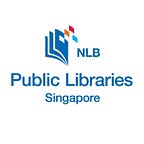How’s Your Inner Child Doing?
Whether we’re 30 or 90, finding joy in simple and innocent pleasures is a behaviour we often attribute to our inner child. But have you ever paused to consider that your inner child might have felt rejected and unloved at times, and that perhaps the fears you have of being abandoned also has something to do with this inner child?
The “Inner Child” Archetype
The concept of an inner child was first explored by psychiatrist Carl Jung. Jung linked this internal child that exists in all of us to “past experiences and memories of innocence, playfulness, and creativity, along with hope for the future”. Other experts described this inner child as an expression of your lived experiences since you were born—not just the experiences of your child self.
What this implies is that having an inner child may not always be a good thing. Since life isn’t always a bed of roses, you may have internalised experiences of being rejected, neglected and abandoned while growing up. Those who suffered abuse are likely still holding on to their pain through their subconscious inner child.
This collection of negative experiences can manifest in our adult lives as impulsivity, outbursts, functioning difficulties and withdrawal from others. Pay attention the next time you observe the behaviours below—signs that your inner child might need some attention:
- Setting a personal goal but sabotaging your own efforts through impulsive behaviour
- Using the same controlling and hurtful parenting tactics that you hated as a kid on your children
- Struggling with low self-esteem and finding difficulty valuing your contributions
- Being easily triggered by passing comments from friends and strangers
Working on Healing Your Inner Child
The first step towards healing your inner child is to acknowledge moments in your childhood where you could have been supported better. It’s about reassuring your internal younger self that they are safe, respected and loved. This healing process is the first step towards setting healthy boundaries in your relationships, claiming your entitlement and asserting yourself with others. Making room for fun, joy and growth is also part of the work of healing and re-parenting your inner child.
One clinical psychologist explained that we all have a younger part of ourselves that was “never quite loved the right way or the way they needed as a child”. Inner child work is therefore a chance to heal your wounded inner child by creating the safe and compassionate environment that your younger self needed, but never had access to.
Some therapists use inner child work to help clients process and recover from traumatic experiences. Here’s how it can benefit you:
- It calls out mental scripts that don’t serve you, and rewrites them.
- It helps you to enjoy life and have fun again.
- You’ll feel again after years of being numb.
- You’ll feel self-compassion and like yourself more.
- You’ll gain personal power and the ability to set boundaries.
- You’ll take better care of yourself.
Book Recommendations
If the idea of healing your inner child sounds intriguing, these recommended reads will guide you along on how you can connect with your inner younger self for better self-care and re-parenting. Of course, if you have any unresolved childhood trauma, please reach out to a mental health professional for support.
1. Running on Empty by Jonice Webb, PhD and Christine Musello, PsyD
Running on Empty focuses on emotional neglect: the invisible force from your childhood that has a profound effect on you today. It dives into what didn’t happen in your childhood, what wasn’t said, and what cannot be remembered. This book gives you clear strategies on how to heal yourself and how you can “pay it forward” by being a better parent through helping your child with their emotional well-being.
Get the book here: eBook, Audiobook
2. How to Do the Work by Dr. Nicole LePera
Dr Nicole LePera has over five million followers on her Instagram account, @the.holistic.psychologist. In this book, she proposes a revolutionary approach to healing which unites the philosophies of mental, physical and spiritual wellness. Dr LePera offers guides on self-healing, breaking free from destructive behaviours and how you can create a more vibrant, authentic and joyful life.
Get the book here: eBook, Audiobook
3. Reconciliation by Thich Nhat Hanh
In this book, Zen Master Thich Nhat Hanh focuses on the awareness of one’s emotions and the healing of relationships through exercises that acknowledge the hurt we experience as children. He shows us how anger, sadness and fear can be transformed into joy and tranquillity through breathing techniques, exploration, meditation and speaking about our strong emotions. The book is written for a wide audience and accessible to people of all backgrounds and spiritual beliefs.
Get the book here: eBook
4. Parent Yourself Again by Yong Kang Chan
Written by Singaporean Yong Kang Chan, Parent Yourself Again recommends a more proactive approach to the healing process. Rather than seeking your parents’ validation, it encourages you to be your own parent by directing the change you’d like to see in yourself and fulfilling the needs of your neglected inner child. The book shows you how to love yourself, develop your inner parent and cultivate a better relationship with yourself and your parents.
Get the book here: Physical Copy
